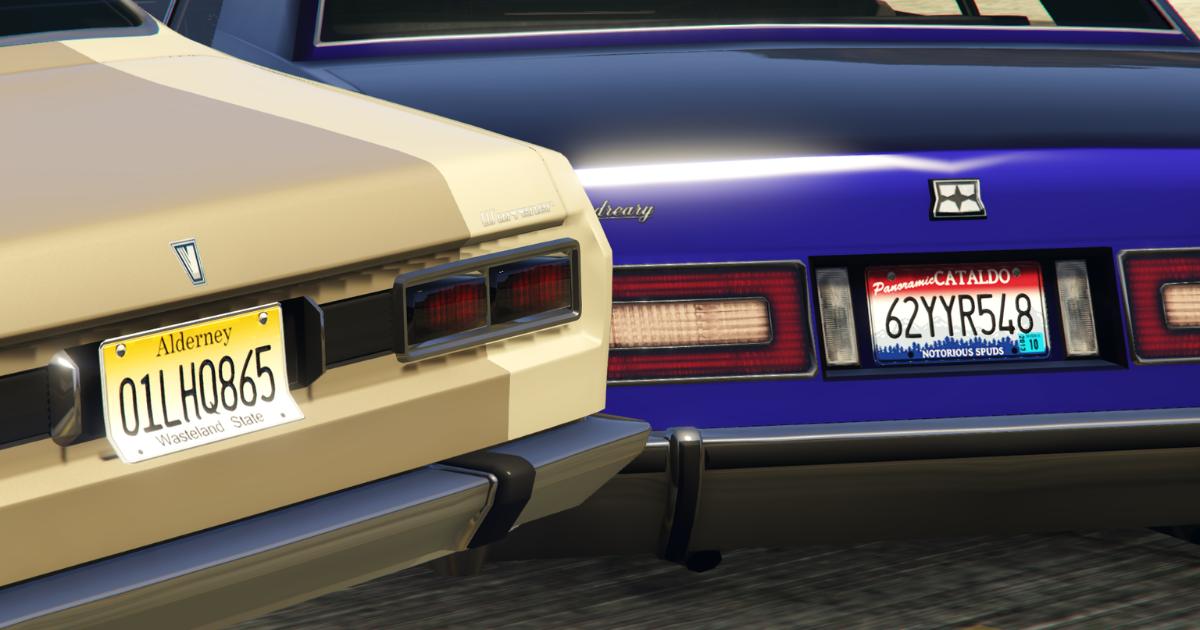To obtain a new license plate, you need to register your vehicle with your state’s motor vehicle department, providing necessary documents like the vehicle title, proof of insurance, and driver’s license.
Once registered, the state issues the license plate along with any required tags, signifying legal ownership and registration of the vehicle.
The process duration varies depending on the state’s administrative procedures and workload. Some states may offer online registration services, simplifying the process for vehicle owners.
What do I need to get a license plate?
You’ll typically need to provide proof of ownership (vehicle title or signed lease agreement), proof of insurance, driver’s license, Vehicle Identification Number (VIN), and possibly a bill of sale or proof of sales tax payment.
Documents Needed for Obtaining a License Plate:
- Proof of Ownership (Vehicle Title or Signed Lease Agreement):
This document establishes your legal ownership or leasing rights to the vehicle.
It may contain details such as the vehicle’s make, model, year, and Vehicle Identification Number (VIN).
- Proof of Insurance:
Proof of valid auto insurance is required to register your vehicle.
This ensures financial responsibility in case of accidents or damages involving your vehicle.
- Driver’s License:
Your driver’s license serves as personal identification and verifies your eligibility to operate a motor vehicle.
It’s essential for registration to confirm your identity and driving privileges.
- Vehicle Identification Number (VIN):
The VIN uniquely identifies your vehicle and provides crucial information about its make, model, and history.
It helps authorities and agencies ensure the accuracy of vehicle registration and ownership.
- Bill of Sale or Proof of Sales Tax Payment:
Depending on the state’s requirements, you may need to provide a bill of sale or proof of sales tax payment.
This document validates the transaction and may be necessary for proving the purchase price or taxation details related to the vehicle.
These documents collectively establish your eligibility for vehicle registration and issuance of a license plate, ensuring compliance with state regulations and legal ownership of the vehicle.
What to do if there is no license plate document?
If you don’t have the vehicle’s title, contact the previous owner or seller to obtain it.
Alternatively, you can apply for a duplicate title from your state’s motor vehicle department.
Ensure to follow the specific procedures outlined by your state for obtaining a duplicate title.
If the vehicle was leased, contact the leasing company to request a copy of the lease agreement.
In cases where the vehicle was gifted or inherited, gather any relevant documentation proving ownership transfer.
How to get a license plate document
To obtain the necessary documents for acquiring a license plate, begin by ensuring you have the vehicle’s title or a signed lease agreement. This serves as proof of ownership or leasing rights and typically includes essential details such as the Vehicle Identification Number (VIN), make, model, and year of the vehicle.
Ensure you have valid auto insurance, as proof of insurance is required for vehicle registration. Your driver’s license serves as personal identification and confirms your eligibility to operate a motor vehicle, making it a crucial document in the process. Once you have these documents in hand, you can proceed with the vehicle registration process through your state’s motor vehicle department, facilitating the issuance of a license plate.
How long does it take to get a license plate?
The duration varies depending on factors such as your state’s administrative procedures and workload.
In some cases, you may receive your license plate within a few days of completing the registration process.
It can take weeks or even longer in certain circumstances, especially if there are delays or backlogs at the motor vehicle department.
To get a precise estimate, contact your state’s motor vehicle department or check their website for processing times and any updates on delays.
What’s the difference between registration, license plates, and tags?
Registration is the process of officially recording your vehicle with the state’s motor vehicle department, establishing legal ownership and compliance with state laws.
License plates are physical plates issued by the state to identify your vehicle. They display a unique combination of letters and numbers for identification purposes.
Tags, often in the form of stickers, signify that your vehicle’s registration is current. They are placed on the license plate and indicate that the vehicle has been renewed and is legally permitted to operate on the road.
How to get tags for a car
When you register your vehicle with the state’s motor vehicle department, you’ll receive tags along with your new license plates. These tags are typically in the form of stickers and serve as proof of up-to-date registration. During the registration renewal process, you’ll receive new tags to replace the old ones, indicating that your registration remains current.
To adhere the new tag to your license plate, simply peel off the backing and carefully affix it to the designated area on the plate. Ensure that the tag is placed securely and visibly to comply with state regulations. Once attached, the tag confirms your vehicle’s legal registration status and allows you to continue driving on the road without any issues.
Pro Tip:
Before renewing your vehicle registration, check if your state requires physical tags or if they rely on other methods, such as electronic monitoring. Understanding your state’s requirements can help you avoid any confusion or potential penalties related to registration compliance.
How to install a license plate
- Gather Your Tools and Supplies
Before beginning, ensure you have your new license plates with current tags attached, four screws of the appropriate size, and a screwdriver that matches the screws.
- Remove the Old Plates
Using the screwdriver, turn the screws counterclockwise to remove them from the old license plate.
Be sure to keep track of the screws as you remove them to avoid misplacement.
- Line Up the New Plate
Align the new license plate so its holes match the holes in your vehicle’s bumper.
If you have a frame for your plate, layer it on top of the plate with its holes also aligned.
- Attach the New Plate
Insert the screws through the plate and bumper holes.
Using the screwdriver, turn the screws clockwise to tighten them securely, but be careful not to overtighten and damage the plate or bumper.
- Check for Stability
Once attached, give the license plate a gentle tug to ensure it’s securely fastened to the vehicle.
Verify that the plate is level and not crooked for proper visibility and compliance with regulations.
- Ensure Visibility
Make sure the license plate is fully visible and unobstructed, both from the front and rear of the vehicle.
Ensure that no part of the plate is covered by accessories or equipment, as this could impede identification by law enforcement or automated systems.
By following these steps, you can safely and securely install your new license plate, ensuring compliance with state regulations and proper vehicle identification on the road.
Where to install the license plate?
The license plate should be installed in a visible and legally compliant location on your vehicle. In most cases:
- Front License Plate: Typically installed on the front bumper of the vehicle, centered either above or below the grille, depending on state regulations. Some states require front license plates, while others may not.
- Rear License Plate: Installed on the rear bumper of the vehicle, usually centered and at a height where it is clearly visible to law enforcement and other drivers.
Ensure that the license plate is securely attached and unobstructed by any accessories or equipment, allowing for easy identification and compliance with state laws.
Can you get insurance without a license plate or tag?
Yes, you can purchase auto insurance even if your vehicle doesn’t have a license plate or tag. Most insurance companies require proof of vehicle registration as part of the application process. Without registration, you may face challenges in obtaining coverage, as insurance companies typically require proof of ownership and legal operation of the vehicle.
If you’re in the process of registering your vehicle or waiting for your new license plates and tags, you may still be able to obtain insurance coverage. Consider contacting insurance providers to inquire about options such as temporary coverage or policies that allow for provisional registration status. Explore non-owner car insurance options if you’re driving a vehicle that you don’t own, as these policies provide liability coverage without requiring vehicle registration in your name.
Can I get insurance on a car with temporary plates?
Yes, you can typically obtain insurance coverage for a vehicle with temporary plates. Insurance companies understand that temporary plates are issued during the registration process and may provide coverage based on the vehicle’s VIN or other identification details.
It’s important to inform your insurance provider about the temporary status of your plates and provide any necessary documentation to ensure seamless coverage. Temporary plates are commonly used for newly purchased vehicles or during the registration renewal process, and insurance coverage can be obtained to protect your vehicle during this period.
What’s a custom license plate?
A custom license plate, also known as a personalized or vanity plate, is a special type of license plate that allows vehicle owners to choose a unique combination of numbers, letters, or both for their vehicle’s identification.
These customized plates typically feature a message, word, or combination of characters selected by the owner, adding a personalized touch to the vehicle’s appearance. Custom license plates are often available for an additional fee and are subject to approval by the state’s motor vehicle department to ensure they comply with guidelines and regulations.









